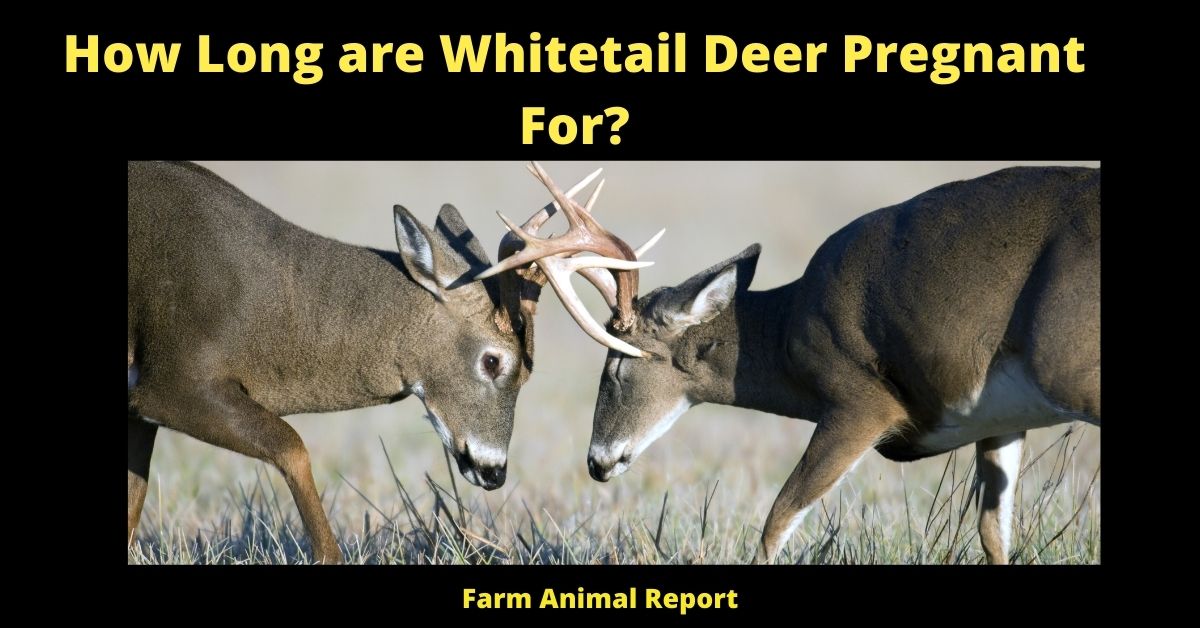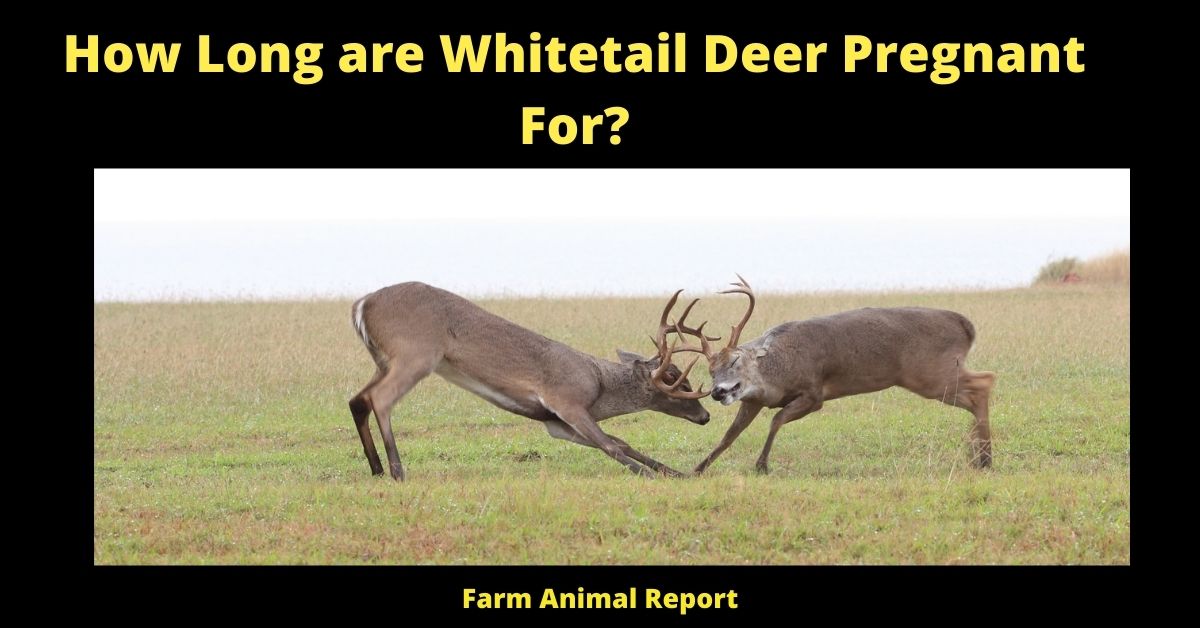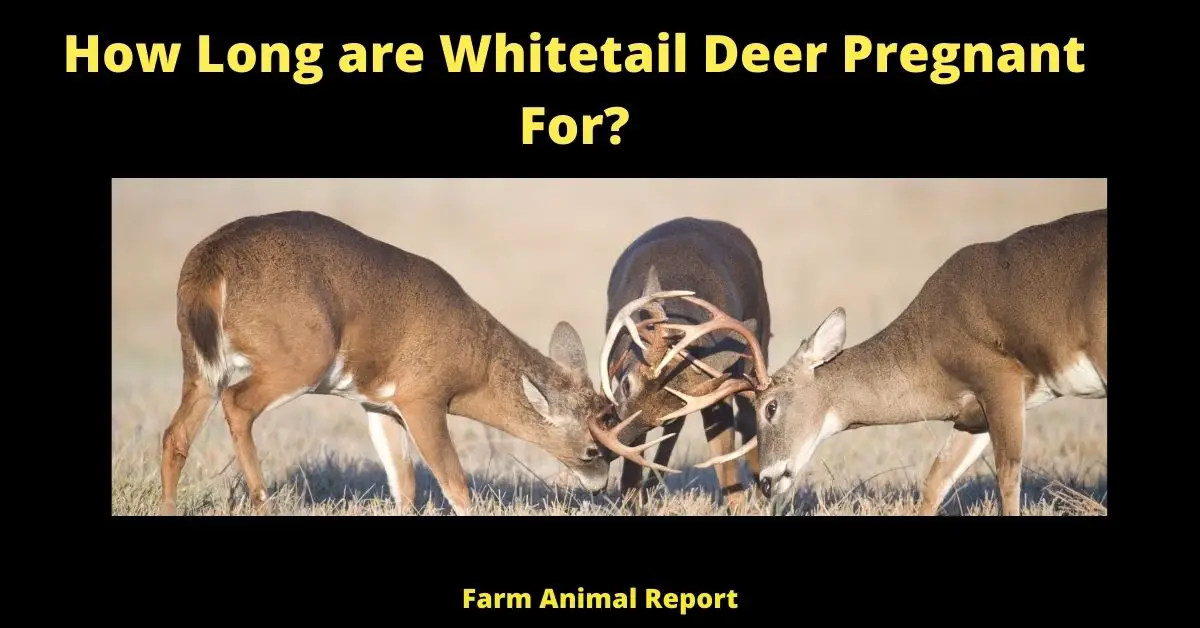The gestation period for a Whitetail deer is about six and a half months, so you can imagine how many baby deer are born each year! Fawns are able to walk within hours of being born and they can run shortly after that. They stay with their mothers until they are about nine months old.
How Long are Whitetail Deer Pregnant For?
Do you know how long a whitetail deer is pregnant? If you’re curious about this, then keep reading. In this blog post, we will discuss the average length of pregnancy for whitetail deer and some of the factors that may affect it. We will also provide some tips on how to care for a pregnant deer. So, without further ado, let’s get started! Jump to How Long Are Deer Pregnant – ( FACTS & PHOTOS)
What is the lifecycle of the Whitetail Deer?
The lifecycle of the Whitetail Deer Begins in the Spring
In the spring, Whitetail Deer give birth to their young. Typically, two fawns are born at a time. The fawns are very small and weigh only a few pounds. They are able to run shortly after they are born, but they do not have any hair yet. Their coloring is also very light, making them difficult to see in the forest. For the first month or so of their lives, the fawns stay hidden in tall grasses or thickets while their mother feeds them. How Long are Whitetail Deer Pregnant For?
The Lifecycle of the Whitetail Deer Continues into Summer
As summer progresses, the fawns will start to grow more hair and their color will become darker. By late summer, they will be able to run with their mother and will start to eat solid food. They will also begin to learn how to survive in the wild.
The Lifecycle of the Whitetail Deer Comes to an End in Fall
In fall, the fawns are fully grown and are ready to live on their own. Their mothers will stop feeding them and they will have to find their own food. As winter approaches, Whitetail Deer will move to areas where there is more food available. They may travel many miles in order to find a good place to spend the winter. In some cases, deer may even travel into states where it is not normally found.
Whitetail deer can live up to ten years in the wild, but the average lifespan is about five years.
What Triggers the Rut Cycle in Whitetail Deer?
In Female deer, the rut is started by changes in the level of hormones in their blood. These hormonal changes are caused by the increasing length of daylight and decreasing amount of food available as autumn approaches. The hormone that triggers the rut is called progesterone, which starts to increase about 45 days before the peak of breeding activity.
In Male deer, testosterone is the main hormone responsible for triggering the rut. Testosterone levels start to rise about 60 days before peak breeding activity. This rise in testosterone stimulates sperm production, leading to increases in mating activity.
The combination of changing hormone levels and increasing day length create a perfect environment for deer to breed. Rutting behavior peaks during late October or early November, depending on where you live.

What is the mating process in Whitetail Deer?
Once a female Doe enters estrus, she will start to release scents called pheromones. Bucks will start to follow her around and eventually, the dominant Buck will mate with her. The mating process can last from a few seconds to a few minutes. After the buck mates with the doe, he will move on to find another one.
If you’re lucky enough to see two bucks fighting for dominance during the breeding season, it’s an incredible sight! The fight usually lasts about five minutes and the victor wins exclusive mating rights with all the does in his territory. Bucks use their antlers as weapons in these fights and sometimes they get pretty injured.
A Female Deer, Does can mate with more than one Buck during the Rut.
Bucks start to breed as early as September, but the peak breeding season is in November and December. After mating, the doe will usually give birth to a single fawn in late May or early June.
The gestation period for a deer is about six and a half months, so you can imagine how many baby deer are born each year! Fawns are able to walk within hours of being born and they can run shortly after that. They stay with their mothers until they are about nine months old.
The Male Deer, The Buck will continue to find new does to mate with until late winter or early spring.
A New Fawn that is a male will begin to grow spikes on his head which will turn into antlers in the next year.
The antlers grow by pushing the skin and velvet out. The antlers will harden in a few months and the velvet will dry up and fall off. Bucks use their antlers for fighting other bucks during the breeding season, as well as for defending their territory.
The Bucks antlers Grow at a rate of about an inch a day during the growing season.
They will shed their antlers in late winter or early spring, depending on where you live.
Each Year the buck’s antlers grow a little bit bigger, and the ones with the biggest antlers are usually the ones that win fights during the breeding season.
The buck’s antlers will continue to grow throughout the years, getting larger in thickness and spread.
Do Female Deer, Does ever grow antlers?
It has been a long-standing question among deer enthusiasts: do female deer, or does, ever grow antlers? The answer is yes, female deer can and do grow antlers. However, the size and shape of their antlers vary greatly from species to species. For example, while white-tailed does typically have small, spindly antlers, moose does can grow impressive racks that rival those of males. Female elk also carry large racks of horns.
So why do female deer have antlers at all? The purpose of antlers differs between male and female deer. In males, the primary purpose of antlers is for fighting other bucks during the mating season; in females, however, the main use of antlers is for defense against predators. Antlers can be a very effective weapon against attacking animals, and they also make it easier for female deer to escape danger.

Final Thoughts – How Long are Whitetail Deer Pregnant For?
The Female Deer of the Whitetail Deer Family carries the Fawn for 200 Days or 6 1/2 Months. She then gives birth to single, twins, or sometimes a set of triplets.
In conclusion, while female deer do not typically grow as large or impressive antlers as males, they still have them for a very important reason – to protect themselves and their young from danger


